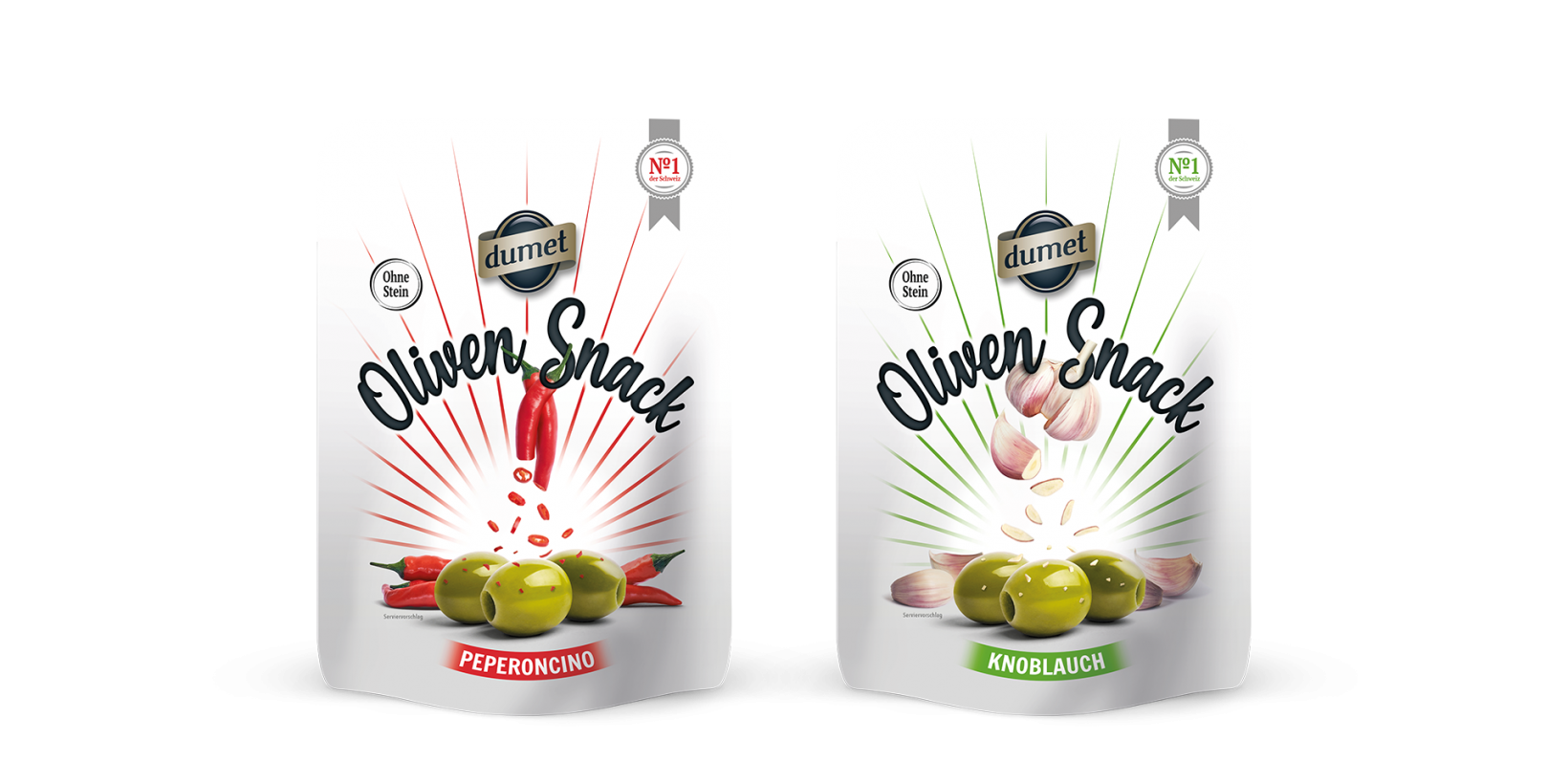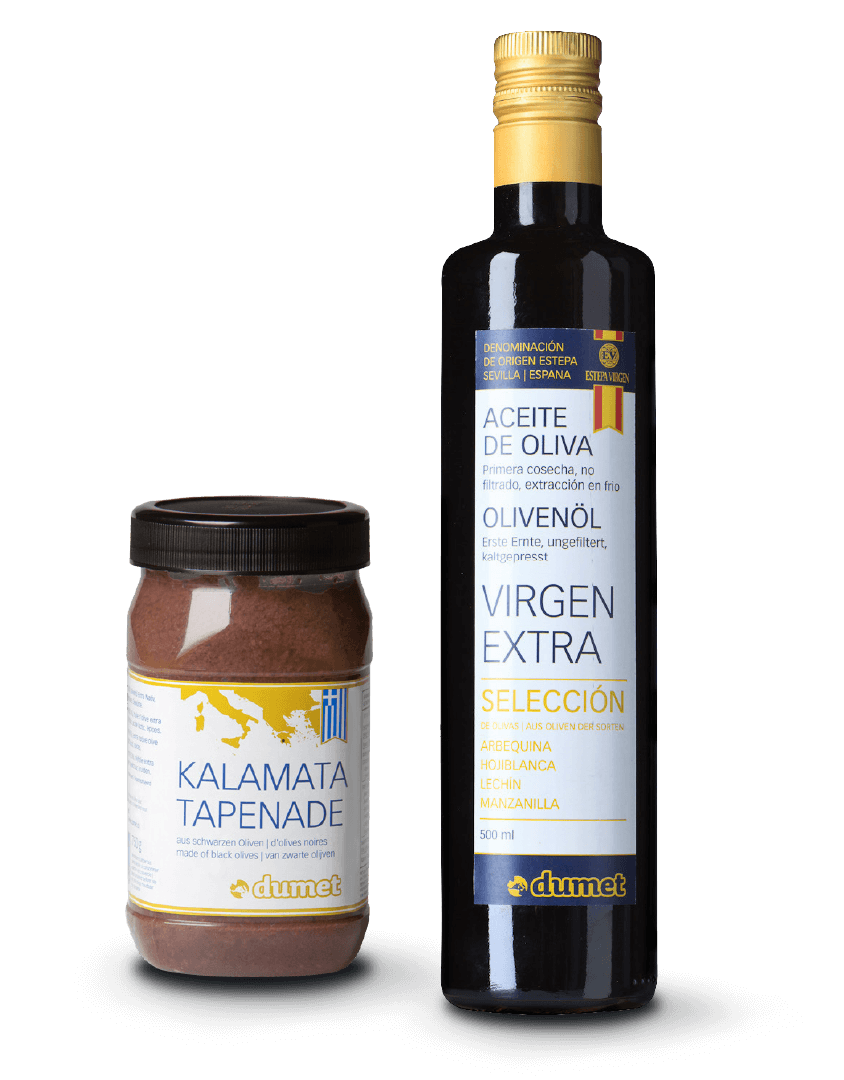Table Olives
Olives from the Mediterranean region taste just like freshly picked olives – available in large stand-up pouches.

Spain
The world’s largest producer of olives: the most important cultivation region is Andalusia.
- Hojiblanca: firm, crunchy variety of olive with high oil content. Outstandingly suitable for processing (pitted, stuffed, in slices).
- Manzanilla: rather soft with extremely low oil content. Very popular due to its nut-like flavour.
- Gordal Reina: the “Queen” of olives; extra-large and very succulent.
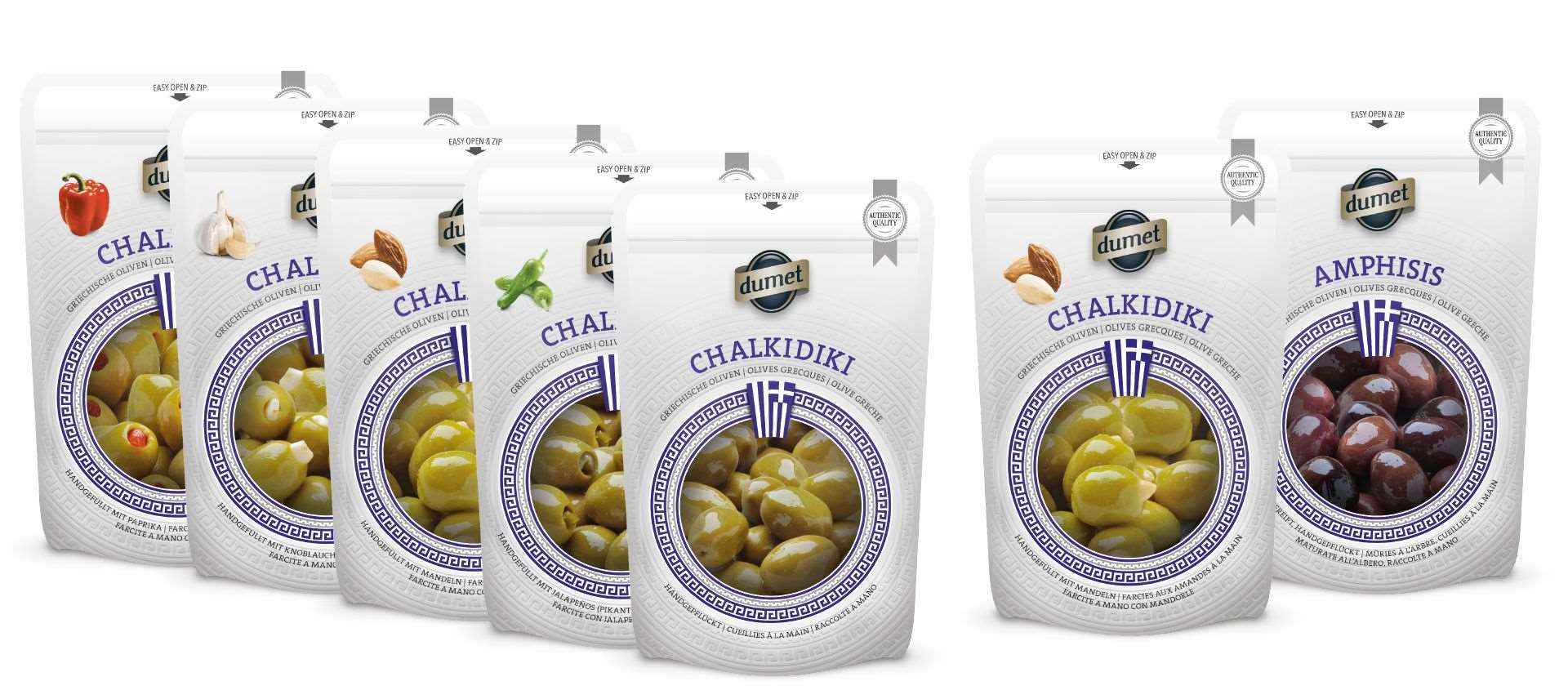
Greece
The Peloponnese is the home of the famous Kalamata olive. Numerous other varieties stem from the cultivation areas near Larissa and Thessaloniki.
- Chalkidiki: long, pointed shape. Firm consistency and usually harvested extra-large. Especially suited for stuffing with whole almonds, garlic, jalapeño peppers and chili peppers. The slightly reddish colour around the stone is typical.
- Kalamata: dark purple, tree-ripened fruit. Wonderfully intense and yet pleasantly mellow aroma. It is a very special treat in the truest sense of the word.
- Amphisis: soft, tree-ripened olive. Aficionados appreciate the wonderfully intensive aroma. Not suitable for processing.
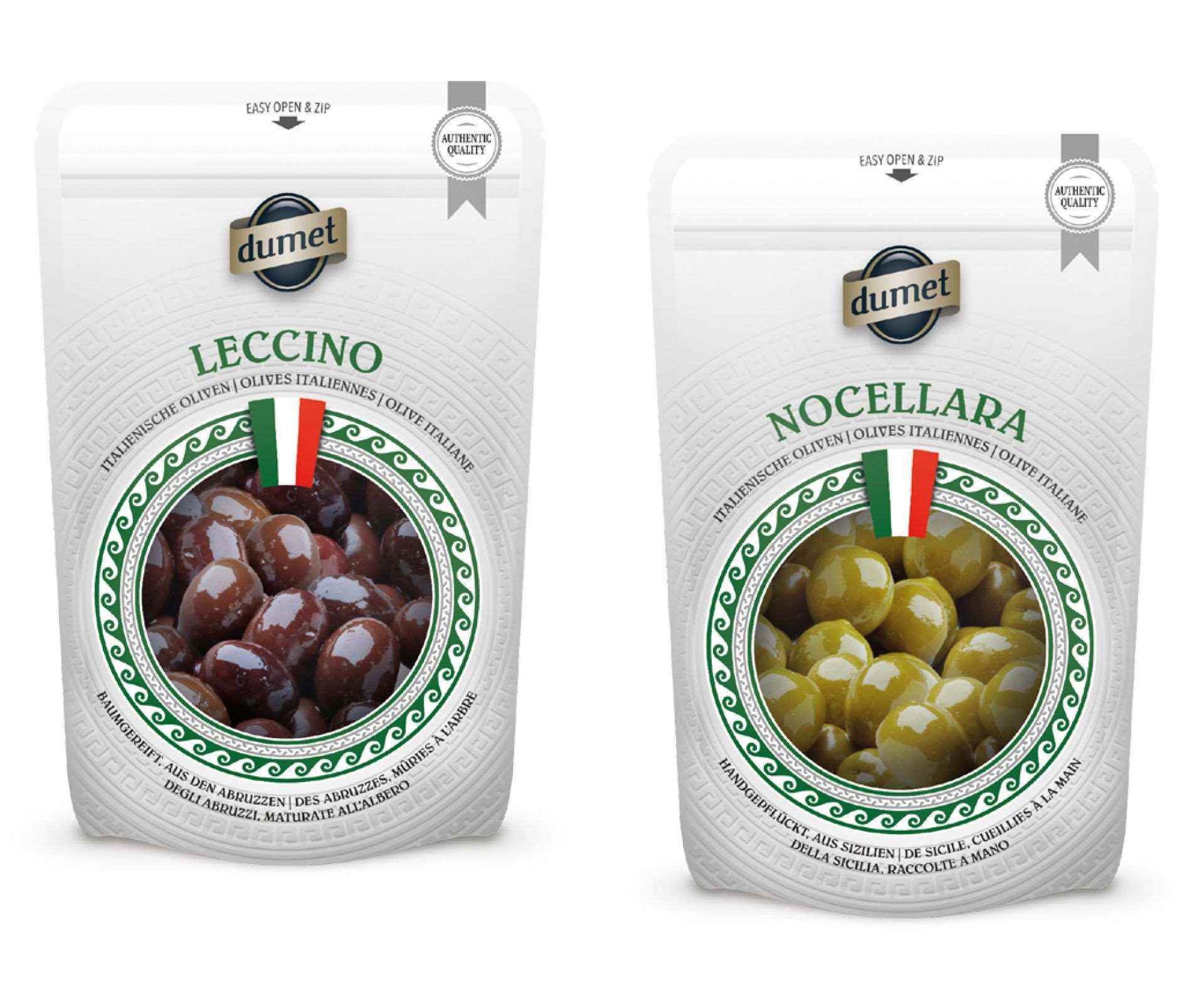
Italy
Not merely known for its outstanding olive oil, but also for its delicious table olives
- Leccino: tree-ripened, hand-picked olive from the Abruzzo region. Convincing through its mild and fruity flavour.
- Nocellara: considered to be one of the best olives in Sicily and cultivated for hundreds of years in the Trapani region. Perfect with antipasti!
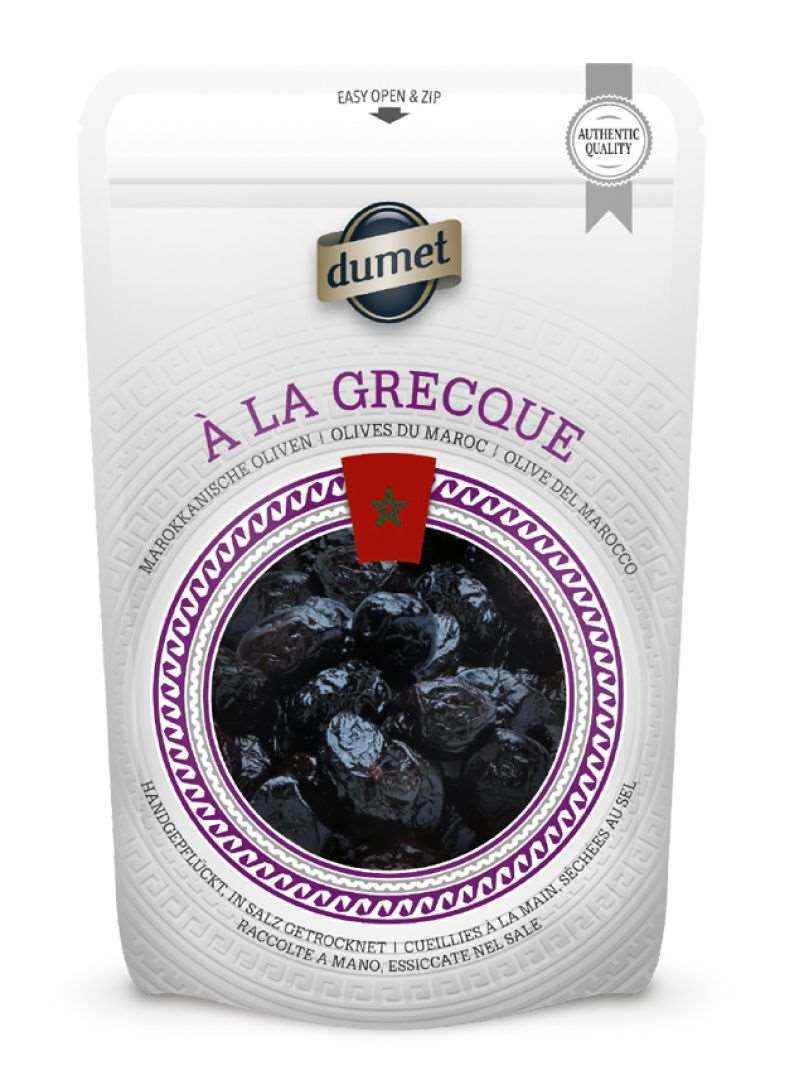
Marocco
Famous for its sundried, wrinkled olives
- À la Grecque: dried like a raisin. The freshly harvested olives are traditionally preserved in salt layer by layer and led through the fermentation process in this way. This results in unique olives with a very intensive aroma.









